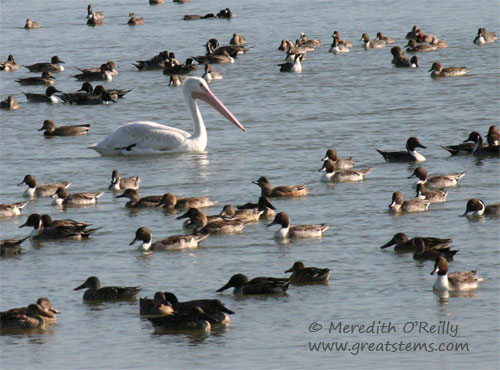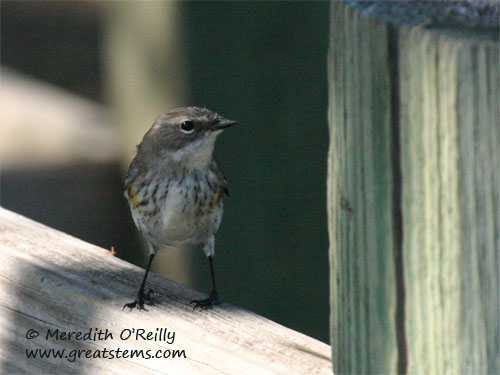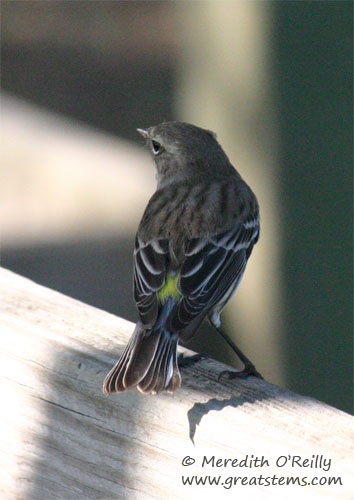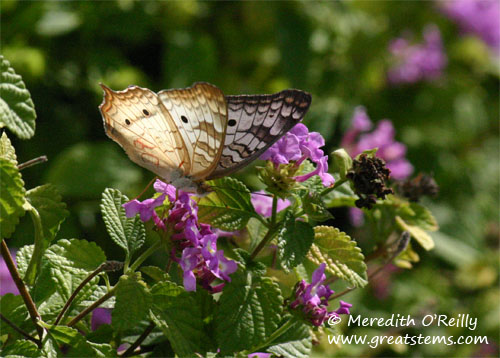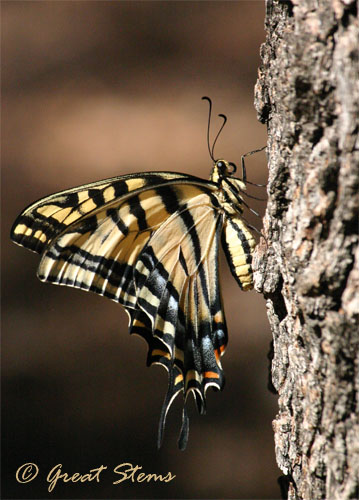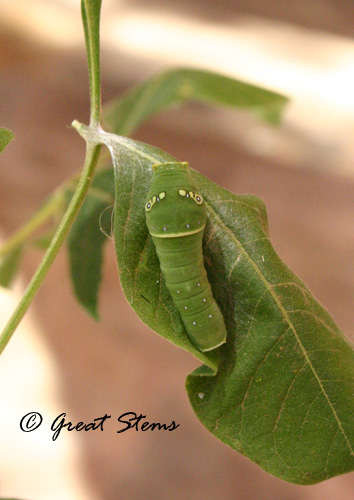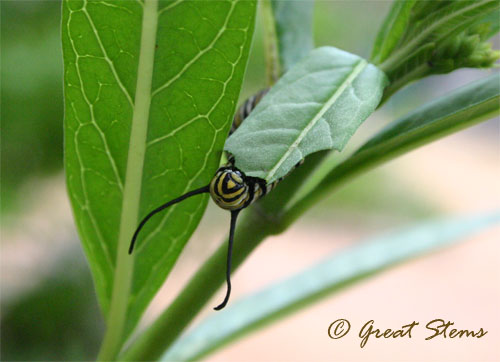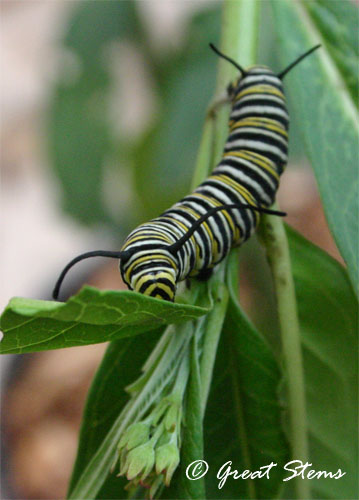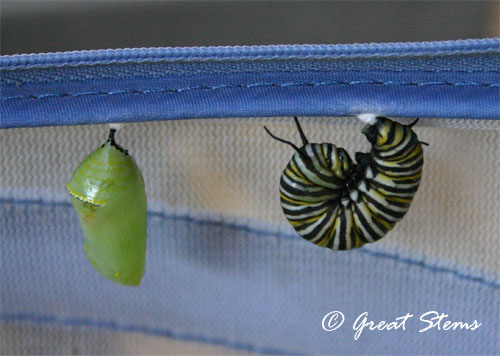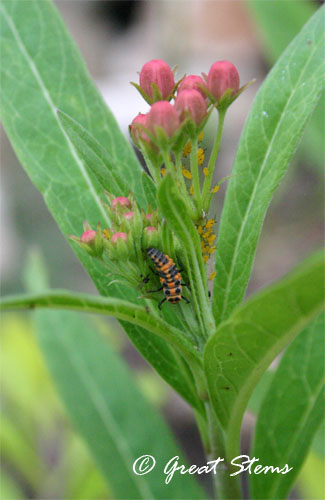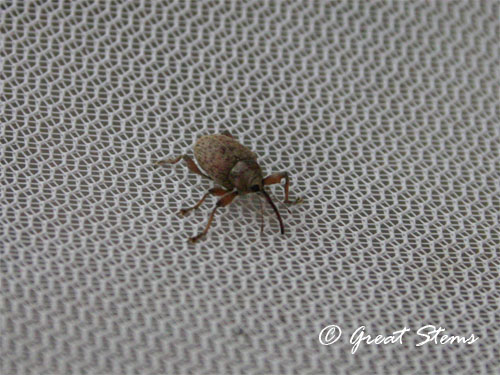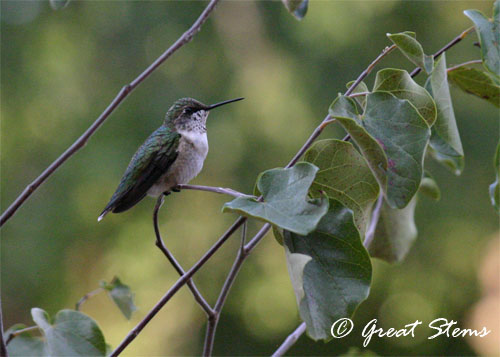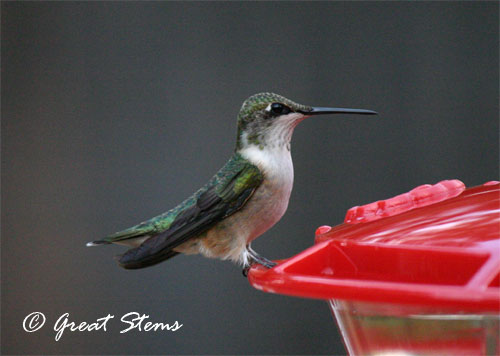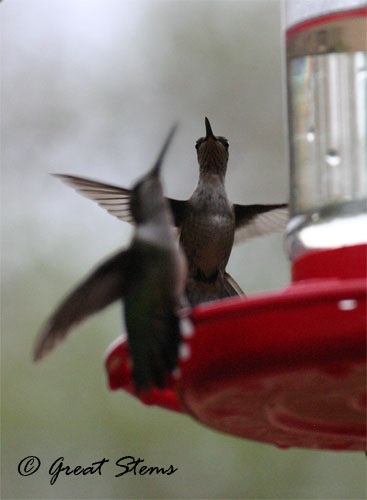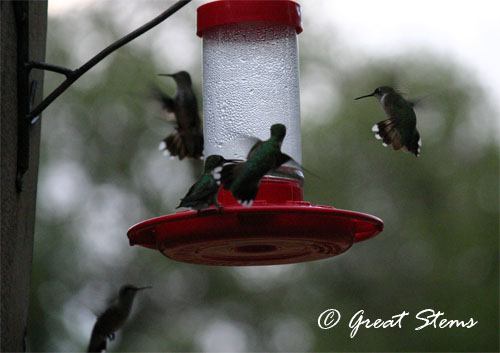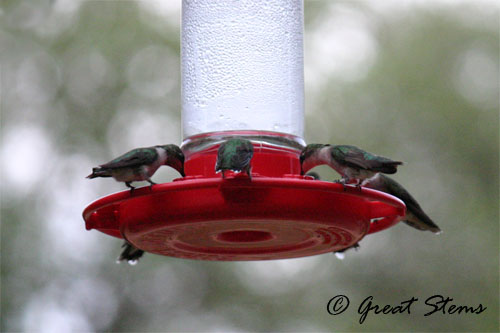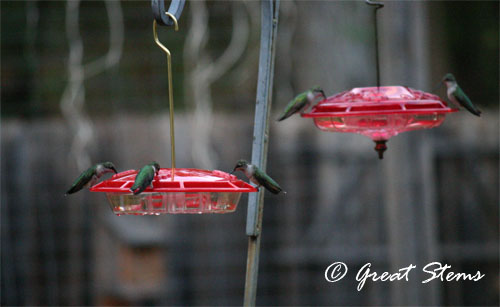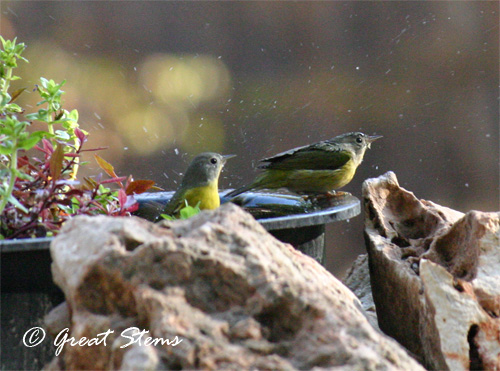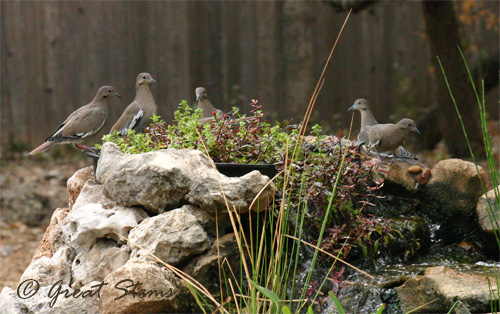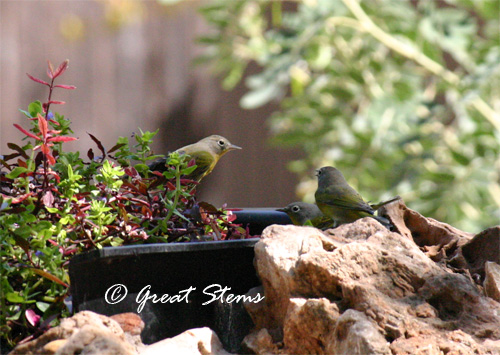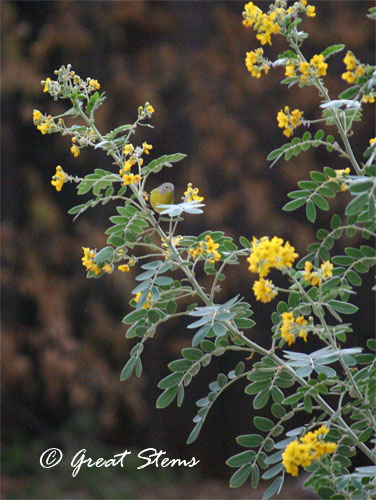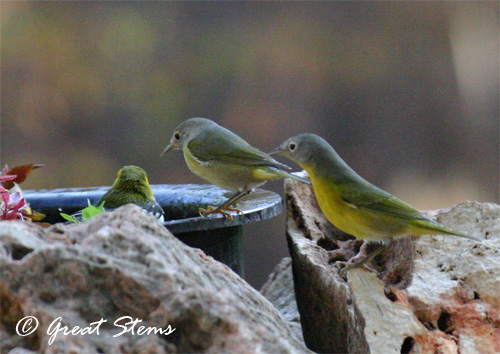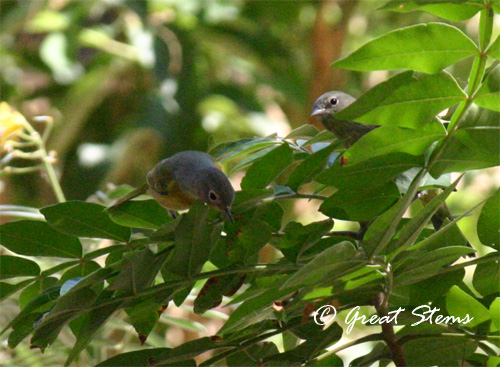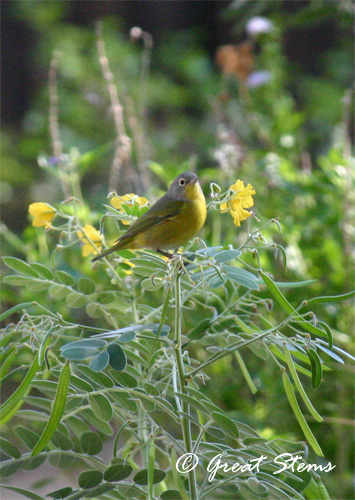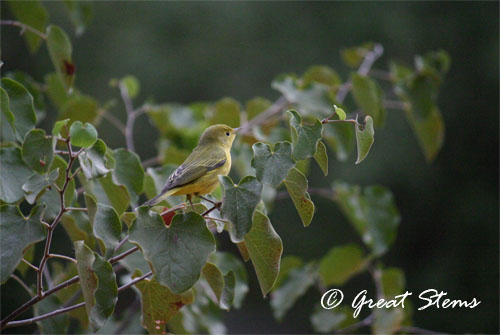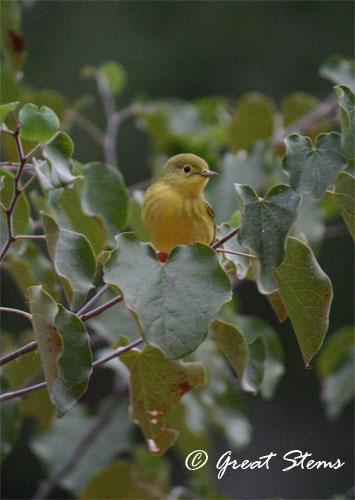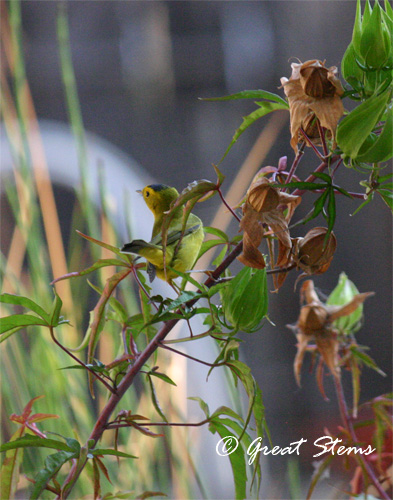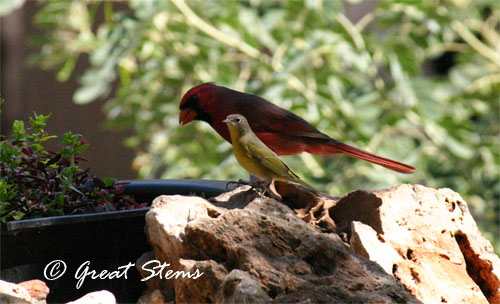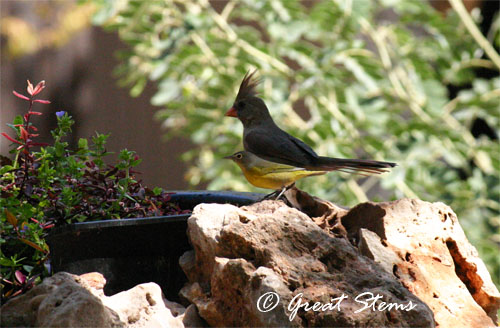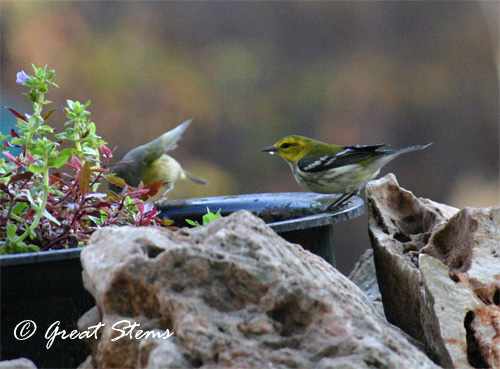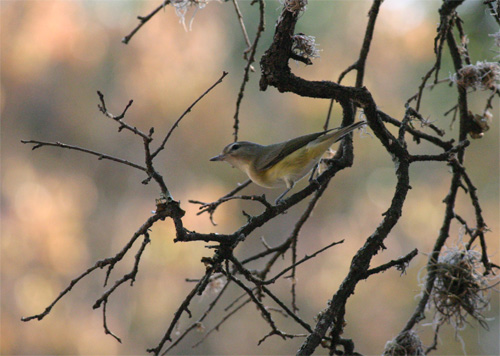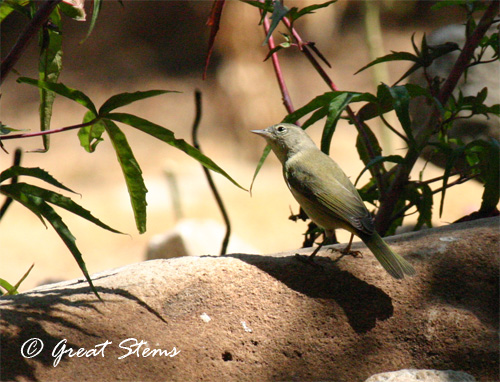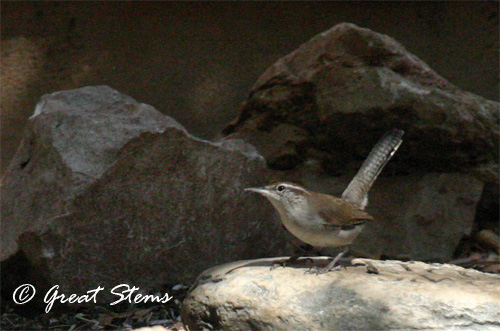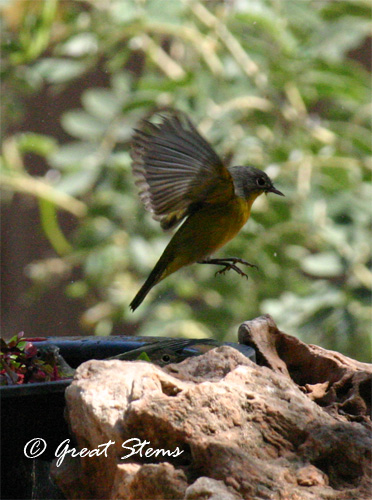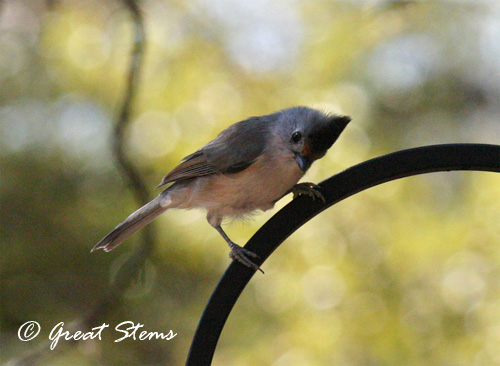Even though we were well on our way back home from Florida, we couldn’t resist making an additional stop or two in Louisiana before the final home stretch to Texas. Beignets, check. Gumbo, check. Wildlife refuge, check.
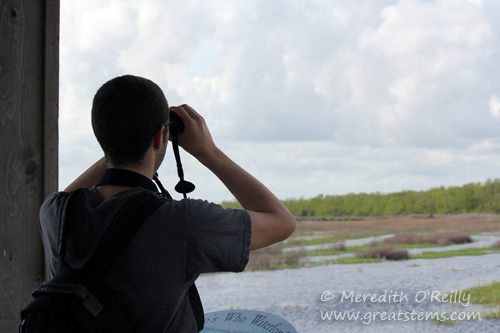 We wanted to visit a wildife refuge in Louisiana to get an idea of environmental differences between it and Florida — and if we had an opportunity, to sneak in a glimpse of the coast. The answer — the Creole Nature Trail, a long wildlife-scenic highway route south of Lake Charles. The trail took us to the Cameron Prairie Wildlife Refuge, as well as several other viewing spots.
We wanted to visit a wildife refuge in Louisiana to get an idea of environmental differences between it and Florida — and if we had an opportunity, to sneak in a glimpse of the coast. The answer — the Creole Nature Trail, a long wildlife-scenic highway route south of Lake Charles. The trail took us to the Cameron Prairie Wildlife Refuge, as well as several other viewing spots.
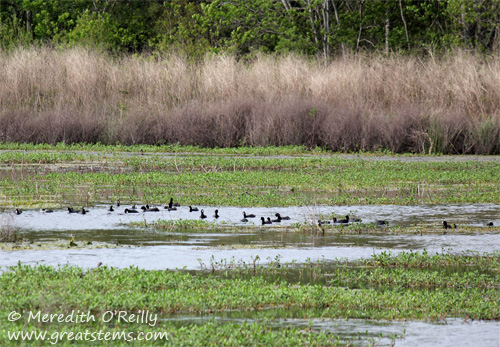
Cameron Prairie Wildlife Refuge’s primary purpose is to support migratory birds, such as wintering waterfowl, as well as many other animal species with its 9,621 acres of marsh, coastal prairie, and old rice fields.
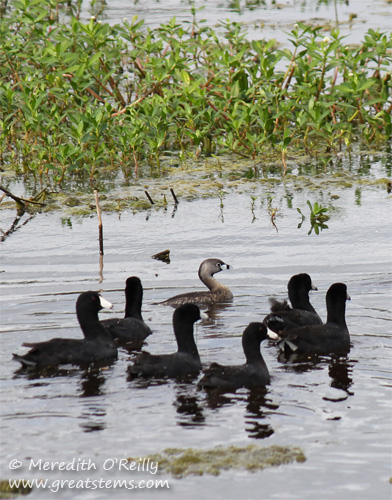
A Pied-Billed Grebe swims among American Coots
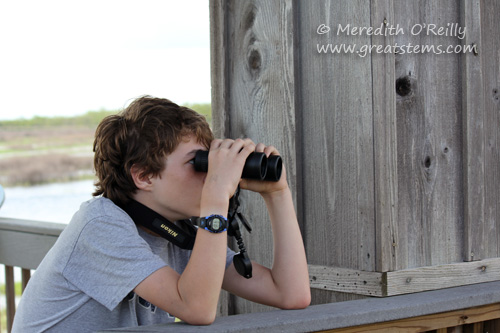 A boardwalk and observation deck make it easy to look search for water-loving birds, and we observed White Ibises, different species of ducks, Great Egrets, Coots, Grebes, Great Blue Herons, and others.
A boardwalk and observation deck make it easy to look search for water-loving birds, and we observed White Ibises, different species of ducks, Great Egrets, Coots, Grebes, Great Blue Herons, and others.
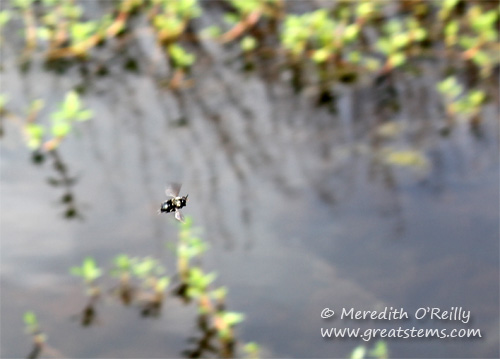 Carpenter Bee — it’s very difficult to capture an image of this fast-flying insect!
Carpenter Bee — it’s very difficult to capture an image of this fast-flying insect!
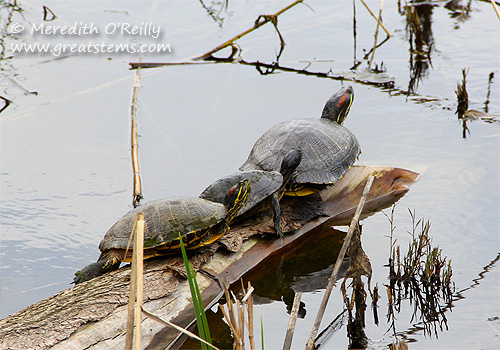
Of course, many other wildlife species live at or visit the refuge — turtles, lizards, butterflies, insects, and, of course, alligators.
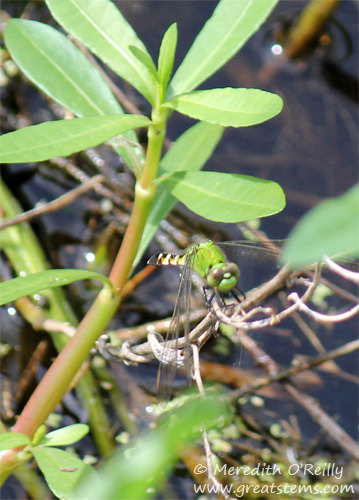 Eastern Pondhawk
Eastern Pondhawk
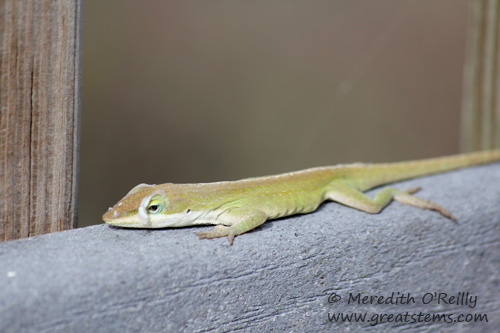 Green Anole, Shedding
Green Anole, Shedding
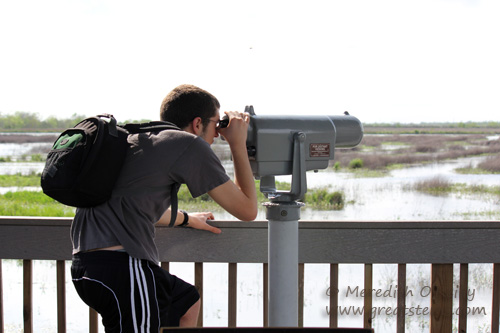 The boys, throughout our entire trip, were quite the naturalists, and they were excellent at both finding and IDing wildlife species — Louisiana was no exception.
The boys, throughout our entire trip, were quite the naturalists, and they were excellent at both finding and IDing wildlife species — Louisiana was no exception.
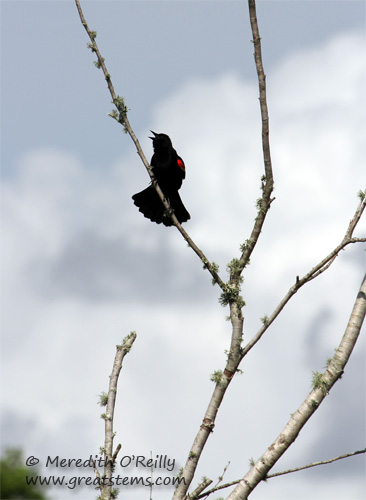 The Red-Winged Blackbirds were the most plentiful birds we saw in southwestern Louisiana. Great numbers of large flocks were spotted time and again throughout the marshland and agricultural areas we visited.
The Red-Winged Blackbirds were the most plentiful birds we saw in southwestern Louisiana. Great numbers of large flocks were spotted time and again throughout the marshland and agricultural areas we visited.
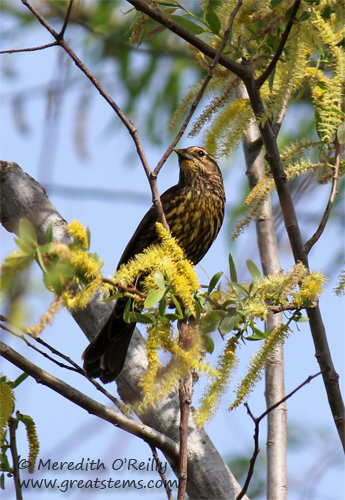 Female Red-Winged Blackbird
Female Red-Winged Blackbird
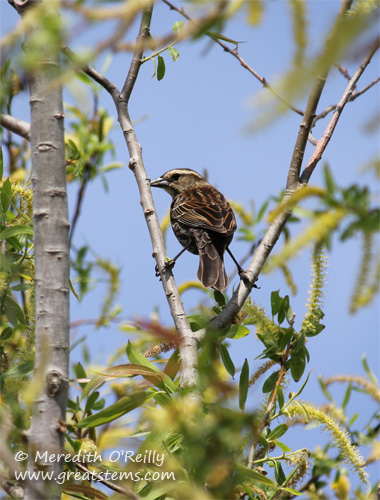
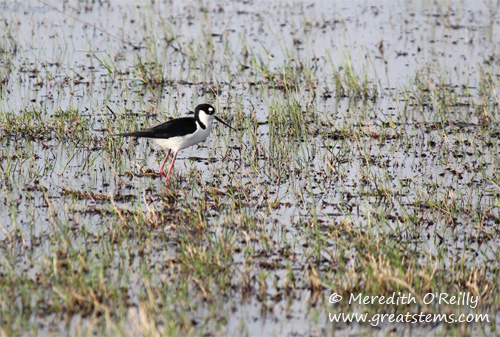
Black-Necked Stilt
Leaving the refuge, we continued toward the coast, the roads taking us past miles and miles of marshland.Often we could see alligators along the road’s edge, where marsh waters attracted a smorgasbord of animals on which an alligator might feast. Unfortunately, this also meant that we occasionally saw dead alligators along the road, a car or truck likely their source of doom. One deceased alligator looked to be at least ten feet long, and it was a very sad sight.
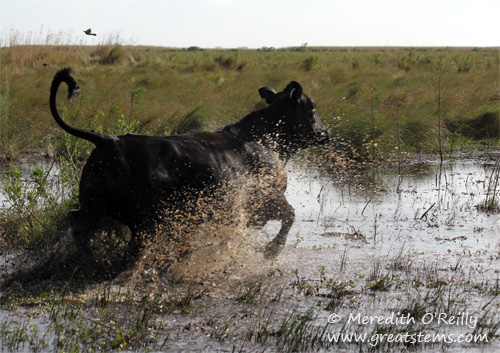 Ah, but we had adventures yet to come. We found that the maps we had and the roadway signs left something to be desired as we traveled that day in Louisiana. Trying to visit a particularly spot along the trail, we made a wrong turn, through no fault of our own (seriously), and after driving a bit we found ourselves on a road lined with curious cattle who splashed through the marshland to come over to see us. In moments lots of cows surrounded our Civic Hybrid, and those big cows made our little car seem smaller than ever.
Ah, but we had adventures yet to come. We found that the maps we had and the roadway signs left something to be desired as we traveled that day in Louisiana. Trying to visit a particularly spot along the trail, we made a wrong turn, through no fault of our own (seriously), and after driving a bit we found ourselves on a road lined with curious cattle who splashed through the marshland to come over to see us. In moments lots of cows surrounded our Civic Hybrid, and those big cows made our little car seem smaller than ever.
I snapped a picture of a cow just outside my window but it apparently decided that it wanted nothing to do with us or my camera, and it ran, which startled another cow running, and another, and before we knew it, we were in the middle of a stampede of some 25 startled cows rushing toward, around, and past us and our little vehicle.
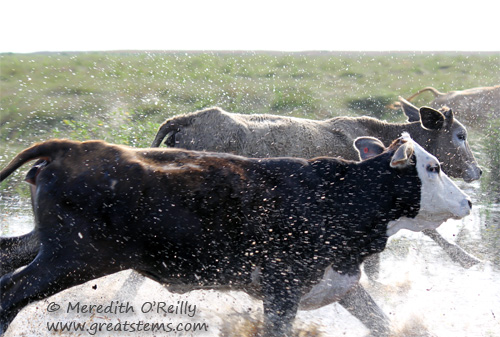 I had no choice but to keep moving my car in the same direction, very slowly, but it wasn’t until we began to pass a few of them that one mooed a “Hey, it’s okay” moo and the cows started to slow and calm down. The experience was a first for us, indeed, and in moments the cows just stared at us calmly again as if nothing had happened.
I had no choice but to keep moving my car in the same direction, very slowly, but it wasn’t until we began to pass a few of them that one mooed a “Hey, it’s okay” moo and the cows started to slow and calm down. The experience was a first for us, indeed, and in moments the cows just stared at us calmly again as if nothing had happened.
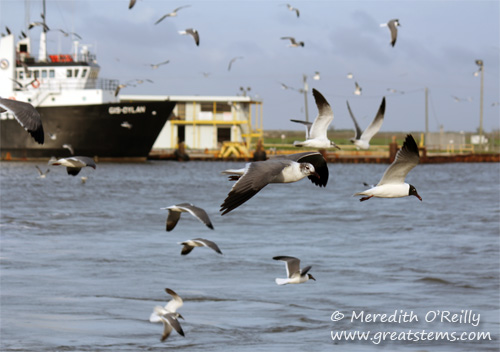 Back on the proper road, we continued to discover more reasons to gripe about the maps and lack of decent road signs, but eventually we found ourselves at a ferry, which takes cars across a ship channel to another portion of the highway. Even there at the ferry, we had sign issues. There was a sign and painted road marks showing where to stop to await the ferry, but there was no sign telling us that after 5pm you needed to drive over to another place in order to get on the ferry. So the driver of the car in front of us waited at the posted place, and we waited behind him, and time tick-tocked and tick-tocked, until a local resident drove up and said, “Hey, after 5pm you have to go over THERE to get on the ferry,” pointing to some place not visible from where we sat. Thank goodness he said something or we might still be at that stop sign waiting for the ferry.
Back on the proper road, we continued to discover more reasons to gripe about the maps and lack of decent road signs, but eventually we found ourselves at a ferry, which takes cars across a ship channel to another portion of the highway. Even there at the ferry, we had sign issues. There was a sign and painted road marks showing where to stop to await the ferry, but there was no sign telling us that after 5pm you needed to drive over to another place in order to get on the ferry. So the driver of the car in front of us waited at the posted place, and we waited behind him, and time tick-tocked and tick-tocked, until a local resident drove up and said, “Hey, after 5pm you have to go over THERE to get on the ferry,” pointing to some place not visible from where we sat. Thank goodness he said something or we might still be at that stop sign waiting for the ferry.
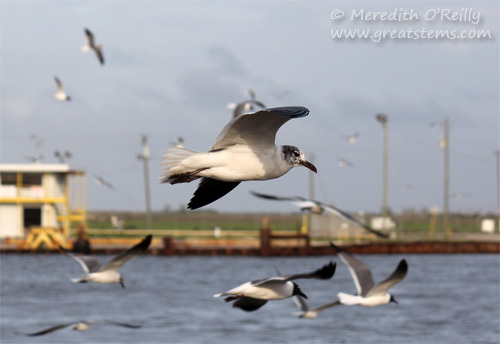 On the plus side, the boys hadn’t been on a ferry in a very long time, so far back they couldn’t remember the experience, so it was nice to be able to drive our car onto a boat, then get out and walk around for a few minutes as we crossed the channel. The gulls and pelicans flying all around us made it even more exciting.
On the plus side, the boys hadn’t been on a ferry in a very long time, so far back they couldn’t remember the experience, so it was nice to be able to drive our car onto a boat, then get out and walk around for a few minutes as we crossed the channel. The gulls and pelicans flying all around us made it even more exciting.
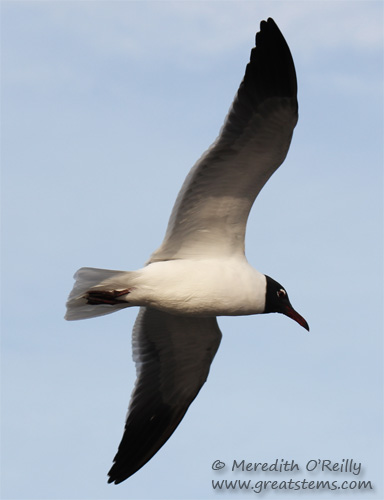 The gulls in particular followed the ferry en masse, hovering just off the back as the waters churned around us. Perhaps they hoped some people would toss them food, but they honestly didn’t seem interested in the humans on the ferry — maybe instead they were hoping to spot some fish in the waters behind the boat.
The gulls in particular followed the ferry en masse, hovering just off the back as the waters churned around us. Perhaps they hoped some people would toss them food, but they honestly didn’t seem interested in the humans on the ferry — maybe instead they were hoping to spot some fish in the waters behind the boat.
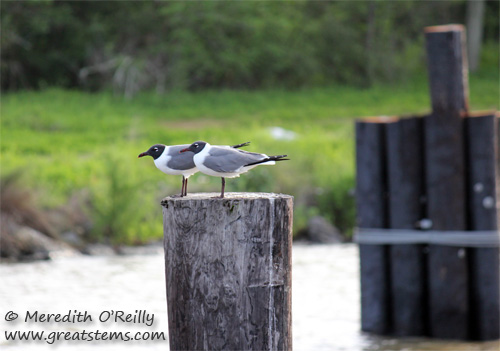
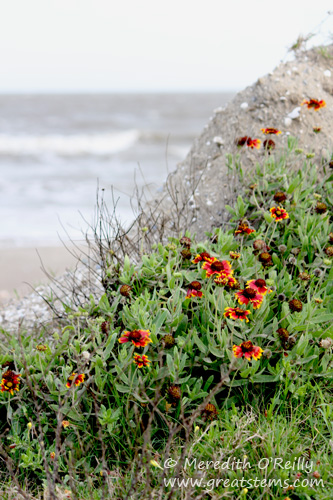 Soon after the ferry ride, we found ourselves driving along the beach. We pulled over to look for shells and found them we did — many were huge!
Soon after the ferry ride, we found ourselves driving along the beach. We pulled over to look for shells and found them we did — many were huge!
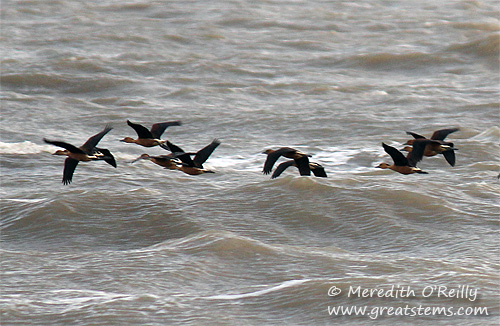 Fulvous Whistling-Ducks
Fulvous Whistling-Ducks
The Louisiana coast was so different from the coasts of Florida’s peninsula, but it reminded me much of the familiar coasts of Texas. Clearly we were close to home!
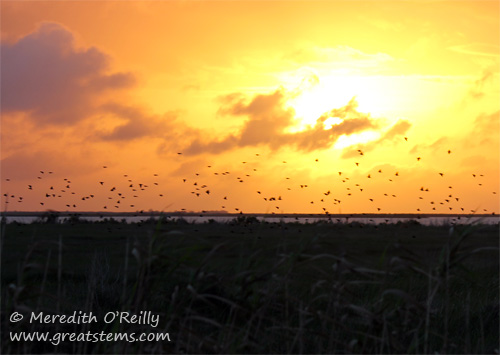
The sun went down as we finished our drive along the Creole Trail, and thousands of Red-Winged Blackbirds silhouetted against the sun’s vibrant setting colors marked the final wildlife viewing of our vacation. It was time to get home to see Texas once again.
Thanks for joining us on our journey across the southern states to Florida and back. It created many memories of a lifetime for me and my boys, and we can’t wait to go back!
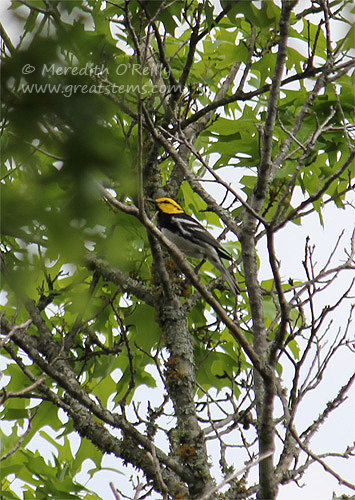
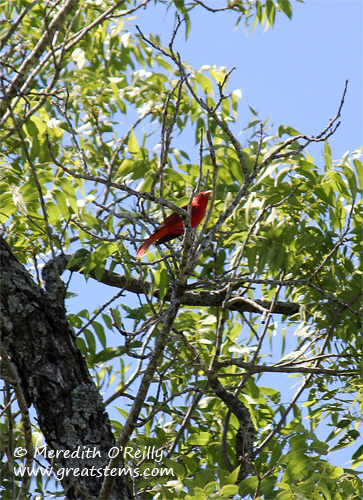
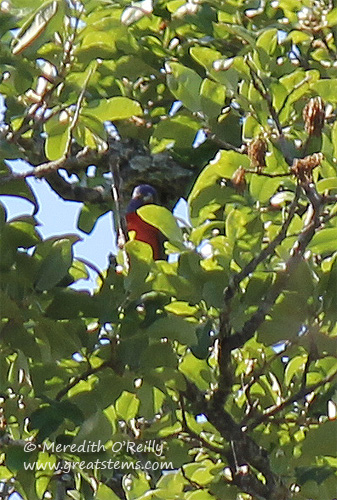
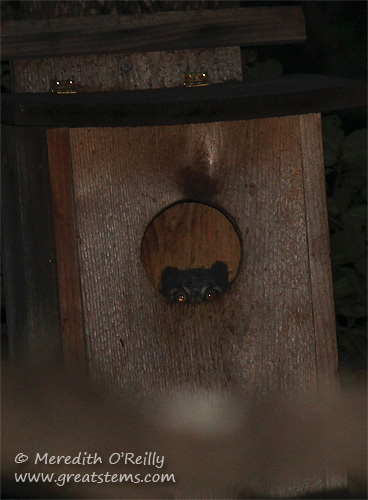
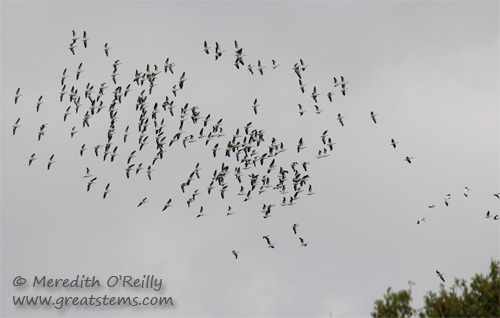
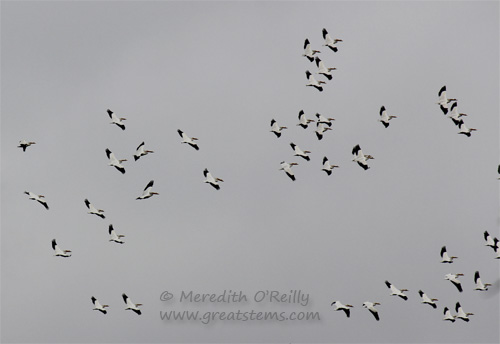
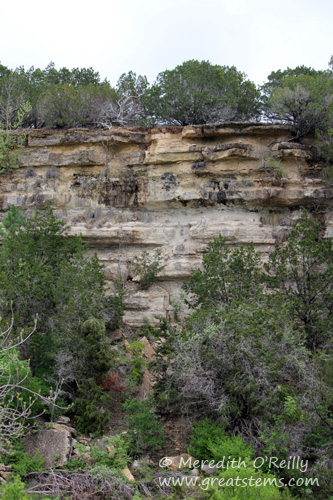 Can you see the American Raven in this picture? Good luck.
Can you see the American Raven in this picture? Good luck.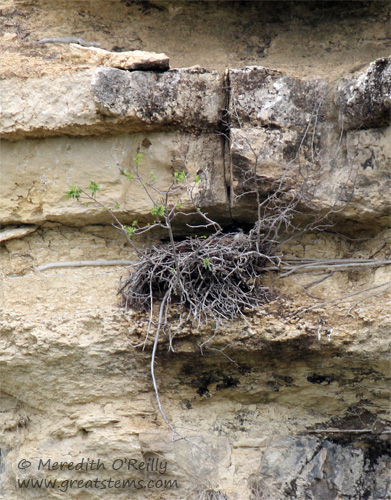 Okay, she’s in a nest. Now go back and find the nest. Then, try to describe its location to someone and see if they can find it. Now you know what it’s like to be a birder!
Okay, she’s in a nest. Now go back and find the nest. Then, try to describe its location to someone and see if they can find it. Now you know what it’s like to be a birder!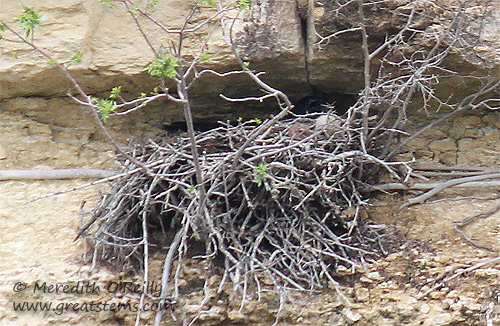
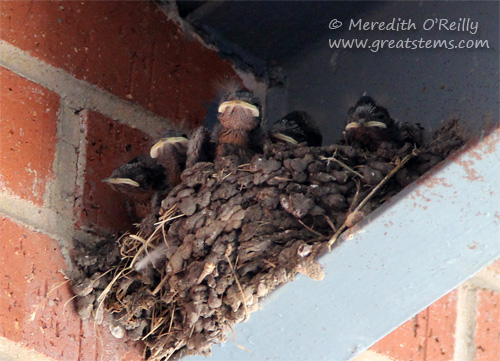
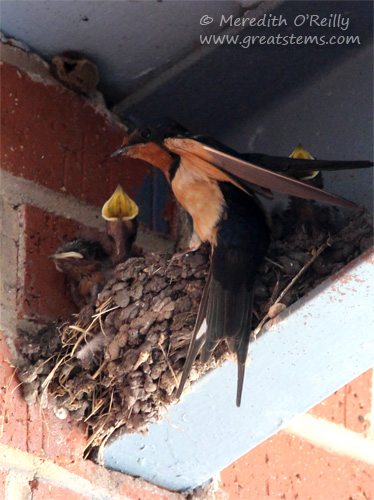
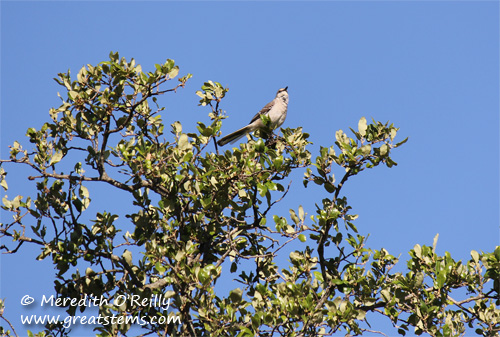 Sometimes for hours and hours. Silly birdie.
Sometimes for hours and hours. Silly birdie.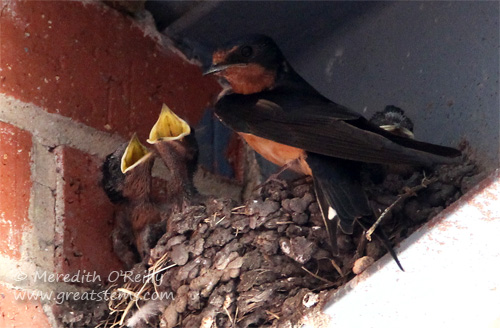
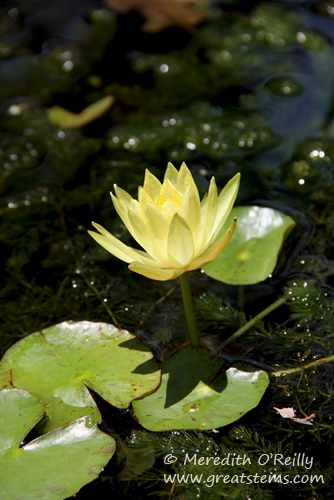
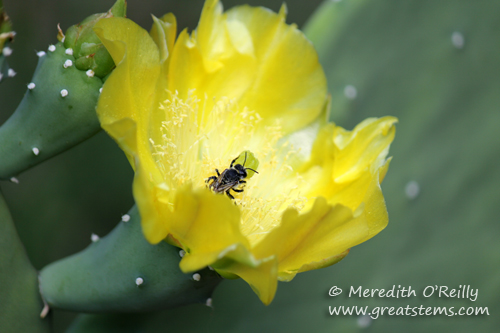
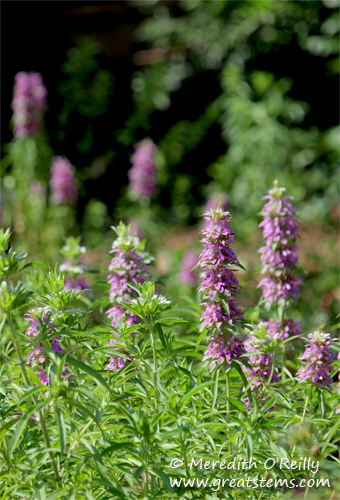
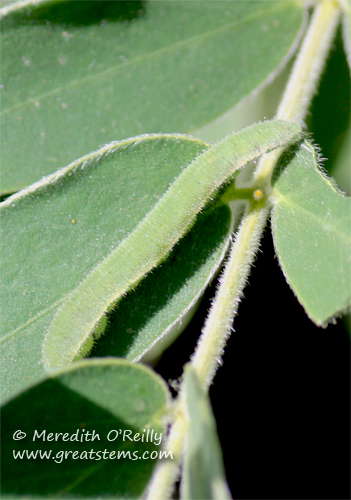
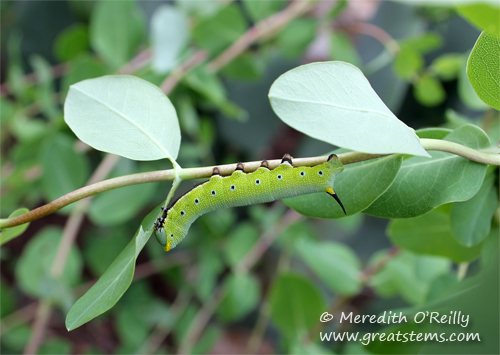
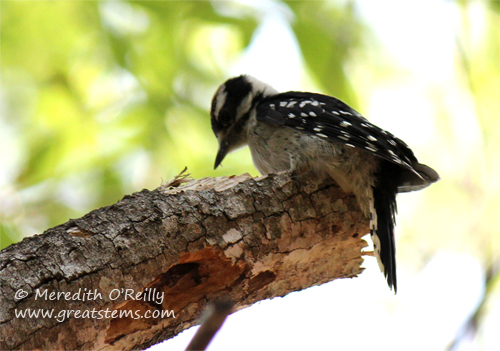
 We wanted to visit a wildife refuge in Louisiana to get an idea of environmental differences between it and Florida — and if we had an opportunity, to sneak in a glimpse of the coast. The answer — the
We wanted to visit a wildife refuge in Louisiana to get an idea of environmental differences between it and Florida — and if we had an opportunity, to sneak in a glimpse of the coast. The answer — the 

 A boardwalk and observation deck make it easy to look search for water-loving birds, and we observed White Ibises, different species of ducks, Great Egrets, Coots, Grebes, Great Blue Herons, and others.
A boardwalk and observation deck make it easy to look search for water-loving birds, and we observed White Ibises, different species of ducks, Great Egrets, Coots, Grebes, Great Blue Herons, and others. Carpenter Bee — it’s very difficult to capture an image of this fast-flying insect!
Carpenter Bee — it’s very difficult to capture an image of this fast-flying insect!


 The boys, throughout our entire trip, were quite the naturalists, and they were excellent at both finding and IDing wildlife species — Louisiana was no exception.
The boys, throughout our entire trip, were quite the naturalists, and they were excellent at both finding and IDing wildlife species — Louisiana was no exception. The Red-Winged Blackbirds were the most plentiful birds we saw in southwestern Louisiana. Great numbers of large flocks were spotted time and again throughout the marshland and agricultural areas we visited.
The Red-Winged Blackbirds were the most plentiful birds we saw in southwestern Louisiana. Great numbers of large flocks were spotted time and again throughout the marshland and agricultural areas we visited. Female Red-Winged Blackbird
Female Red-Winged Blackbird

 Ah, but we had adventures yet to come. We found that the maps we had and the roadway signs left something to be desired as we traveled that day in Louisiana. Trying to visit a particularly spot along the trail, we made a wrong turn, through no fault of our own (seriously), and after driving a bit we found ourselves on a road lined with curious cattle who splashed through the marshland to come over to see us. In moments lots of cows surrounded our Civic Hybrid, and those big cows made our little car seem smaller than ever.
Ah, but we had adventures yet to come. We found that the maps we had and the roadway signs left something to be desired as we traveled that day in Louisiana. Trying to visit a particularly spot along the trail, we made a wrong turn, through no fault of our own (seriously), and after driving a bit we found ourselves on a road lined with curious cattle who splashed through the marshland to come over to see us. In moments lots of cows surrounded our Civic Hybrid, and those big cows made our little car seem smaller than ever.
 Back on the proper road, we continued to discover more reasons to gripe about the maps and lack of decent road signs, but eventually we found ourselves at a ferry, which takes cars across a ship channel to another portion of the highway. Even there at the ferry, we had sign issues. There was a sign and painted road marks showing where to stop to await the ferry, but there was no sign telling us that after 5pm you needed to drive over to another place in order to get on the ferry. So the driver of the car in front of us waited at the posted place, and we waited behind him, and time tick-tocked and tick-tocked, until a local resident drove up and said, “Hey, after 5pm you have to go over THERE to get on the ferry,” pointing to some place not visible from where we sat. Thank goodness he said something or we might still be at that stop sign waiting for the ferry.
Back on the proper road, we continued to discover more reasons to gripe about the maps and lack of decent road signs, but eventually we found ourselves at a ferry, which takes cars across a ship channel to another portion of the highway. Even there at the ferry, we had sign issues. There was a sign and painted road marks showing where to stop to await the ferry, but there was no sign telling us that after 5pm you needed to drive over to another place in order to get on the ferry. So the driver of the car in front of us waited at the posted place, and we waited behind him, and time tick-tocked and tick-tocked, until a local resident drove up and said, “Hey, after 5pm you have to go over THERE to get on the ferry,” pointing to some place not visible from where we sat. Thank goodness he said something or we might still be at that stop sign waiting for the ferry.
 The gulls in particular followed the ferry en masse, hovering just off the back as the waters churned around us. Perhaps they hoped some people would toss them food, but they honestly didn’t seem interested in the humans on the ferry — maybe instead they were hoping to spot some fish in the waters behind the boat.
The gulls in particular followed the ferry en masse, hovering just off the back as the waters churned around us. Perhaps they hoped some people would toss them food, but they honestly didn’t seem interested in the humans on the ferry — maybe instead they were hoping to spot some fish in the waters behind the boat.
 Soon after the ferry ride, we found ourselves driving along the beach. We pulled over to look for shells and found them we did — many were huge!
Soon after the ferry ride, we found ourselves driving along the beach. We pulled over to look for shells and found them we did — many were huge! 

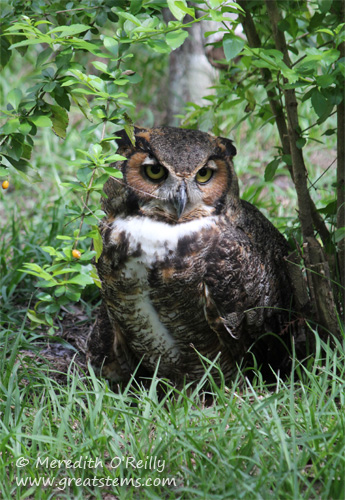
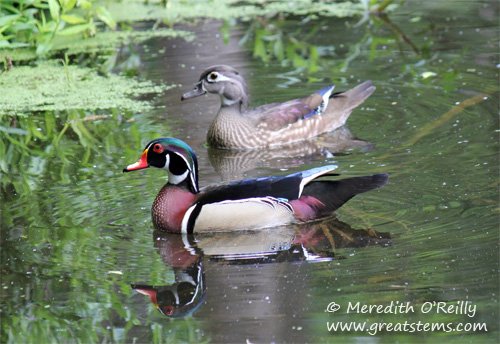
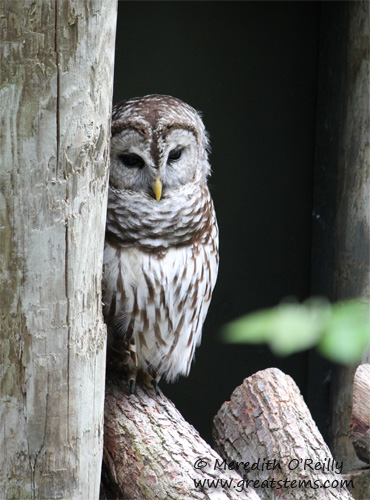 Barred Owl
Barred Owl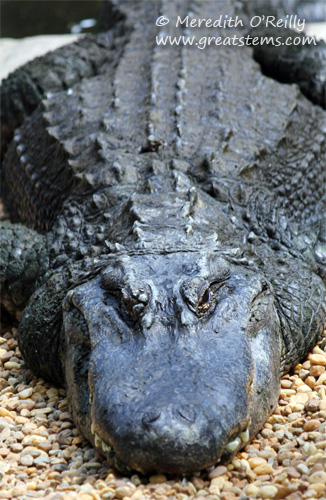
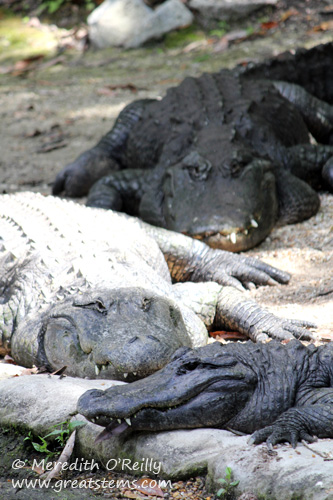
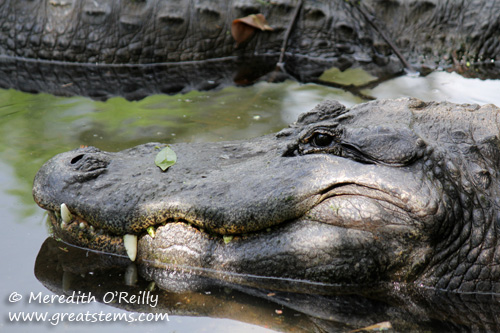
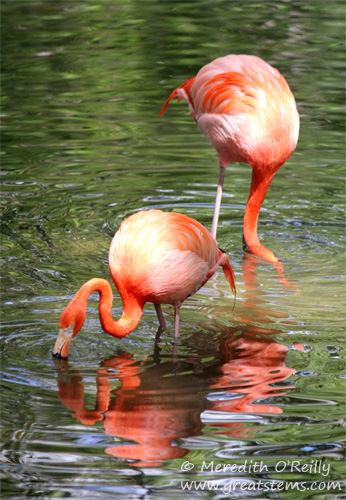
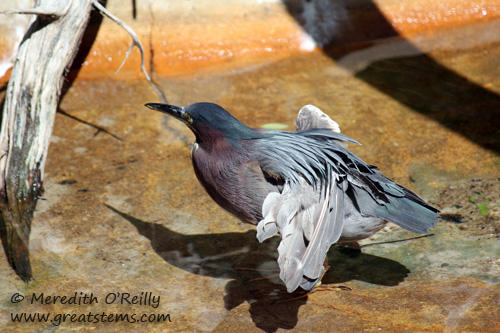 This Green Heron has a severe wing injury, and lucky for it, it has a home at the state park.
This Green Heron has a severe wing injury, and lucky for it, it has a home at the state park.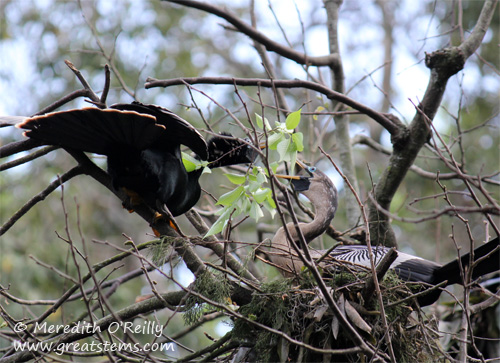
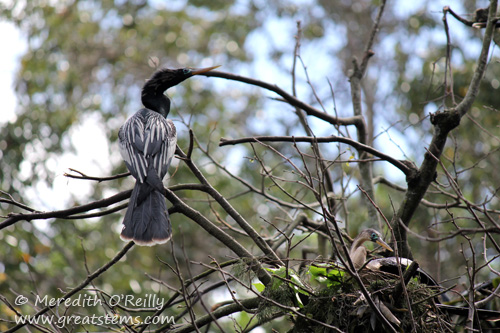 Eventually he got the branch in an acceptable spot.
Eventually he got the branch in an acceptable spot.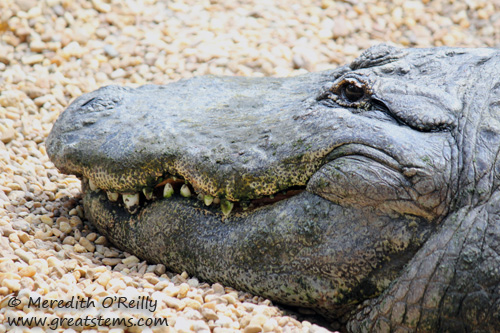
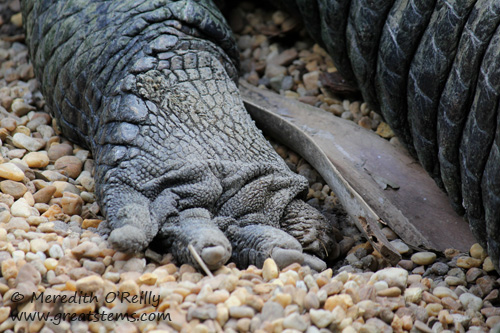
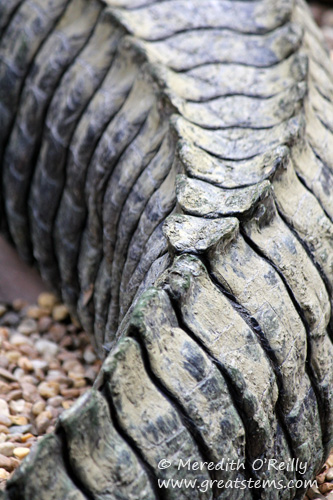
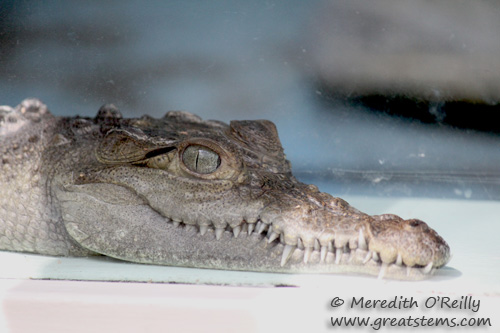
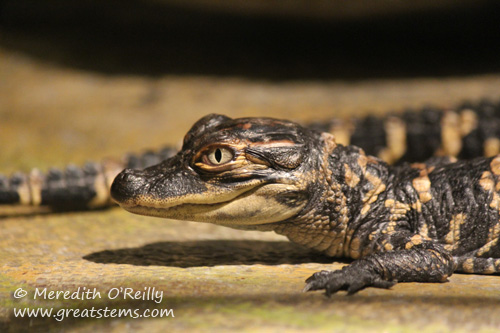
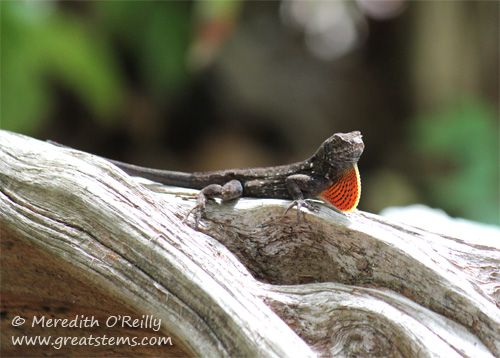
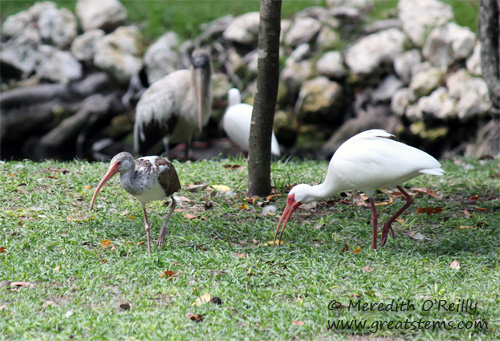
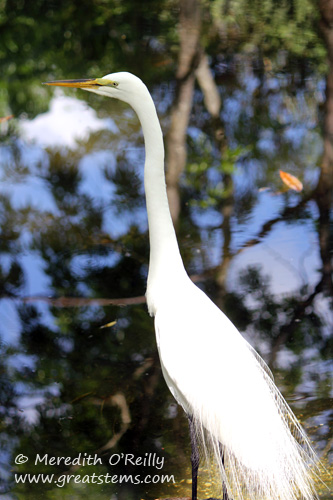
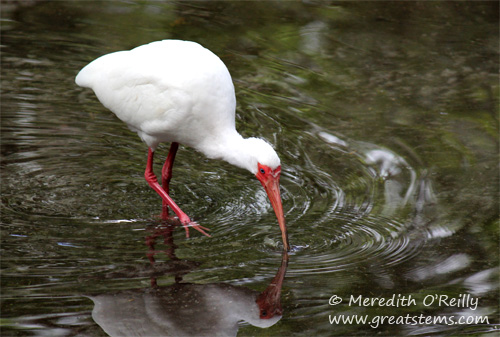
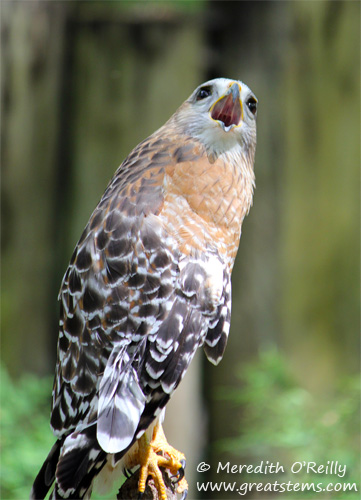
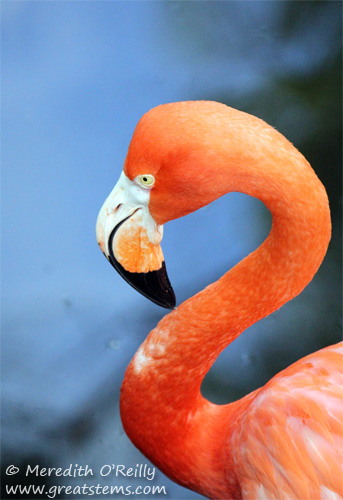 Flamingo
Flamingo
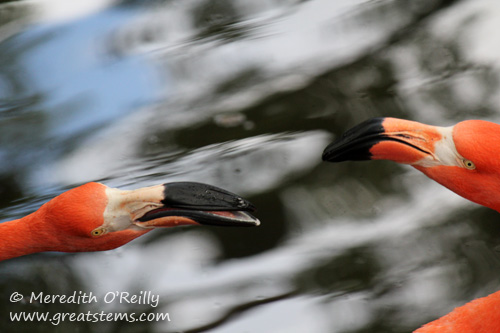
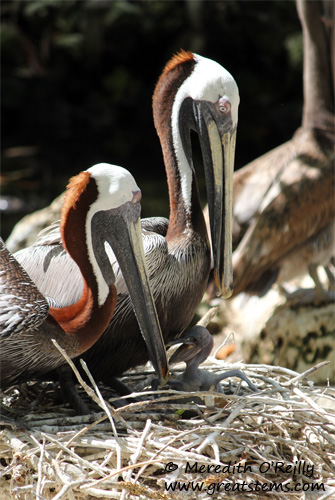
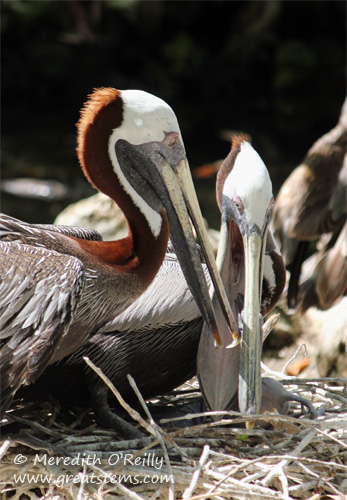
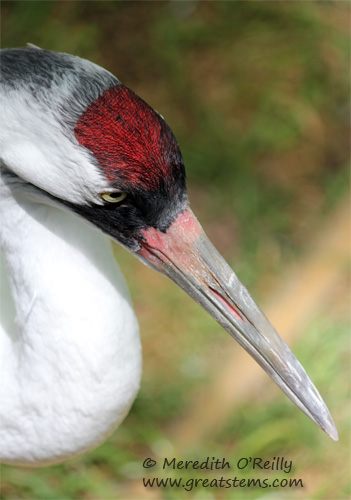
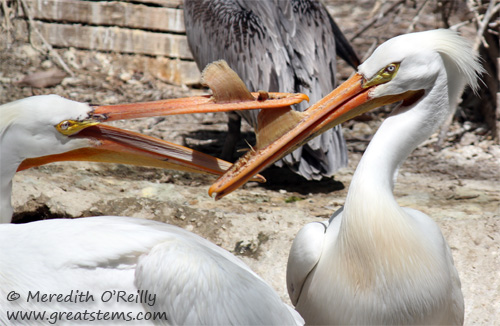
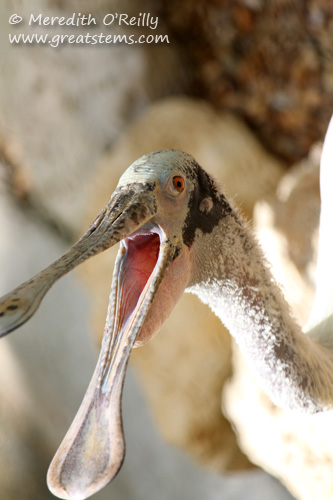
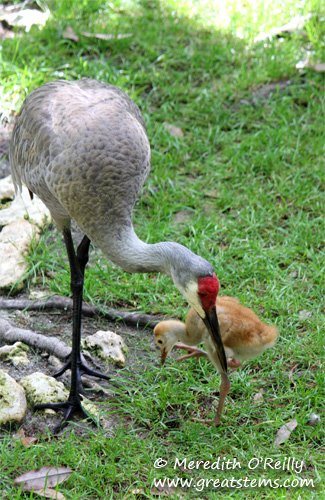
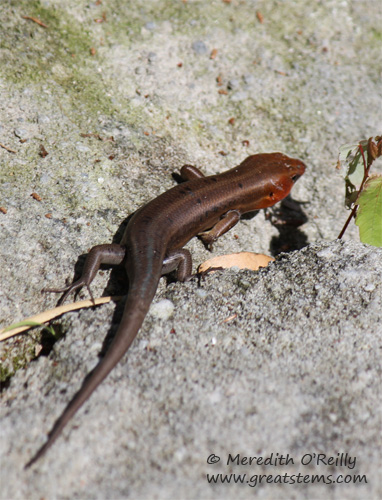
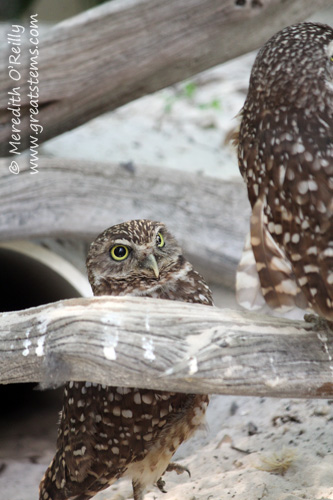
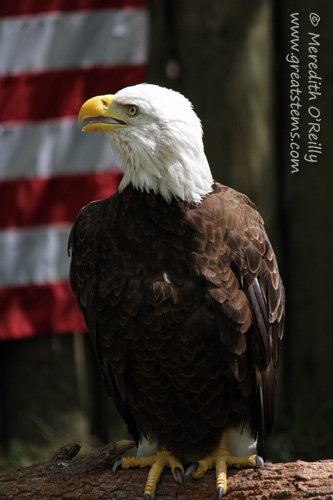
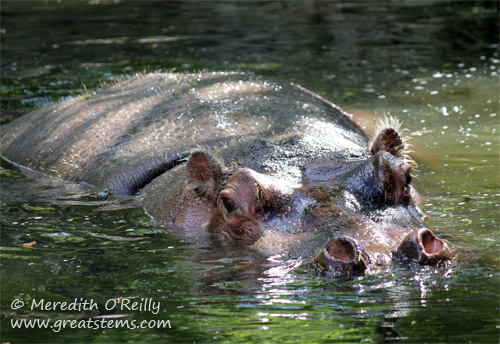
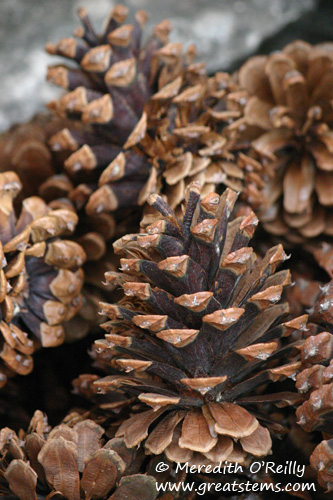
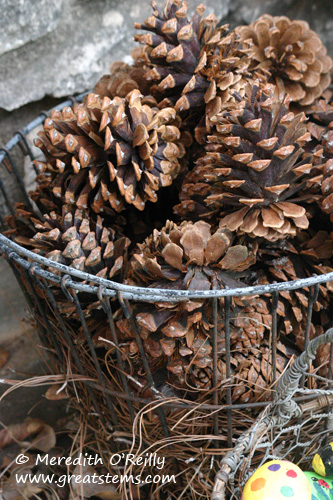
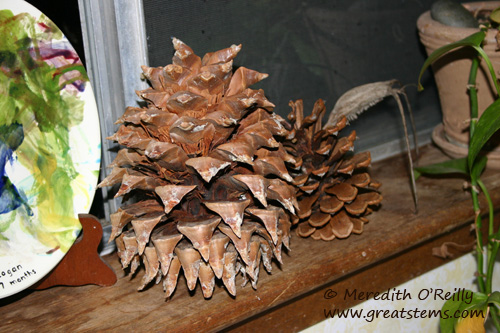 I know there are too many pine cones in this wonderful bounty for one wildlife-loving family to use. I’ll likely share some with the kids I work with and with other wildlife gardeners, so they can make their own feeders. I’ve decided, though, that the giant pine cone shall remain peanut-butter free. It will be too much fun to show it to kids at a nature talk.
I know there are too many pine cones in this wonderful bounty for one wildlife-loving family to use. I’ll likely share some with the kids I work with and with other wildlife gardeners, so they can make their own feeders. I’ve decided, though, that the giant pine cone shall remain peanut-butter free. It will be too much fun to show it to kids at a nature talk.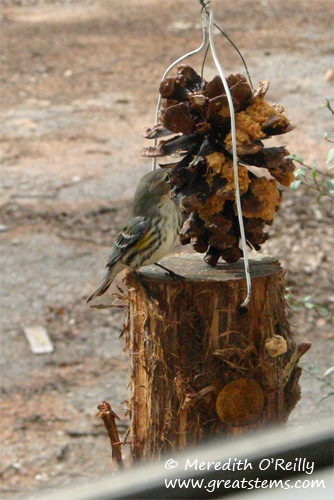
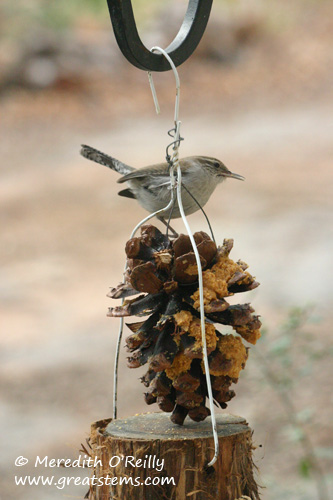
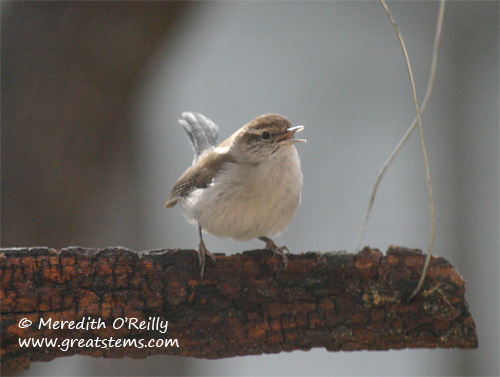
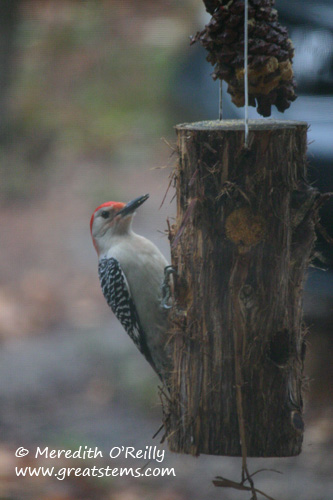
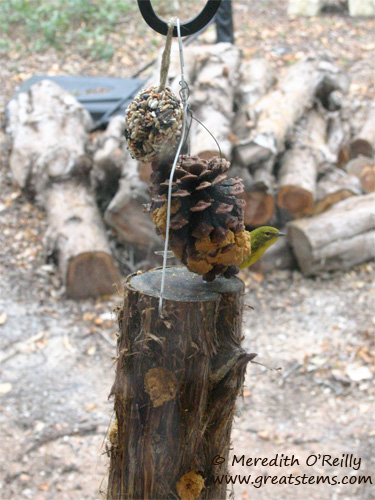
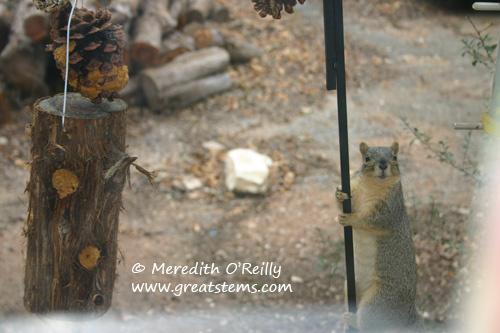
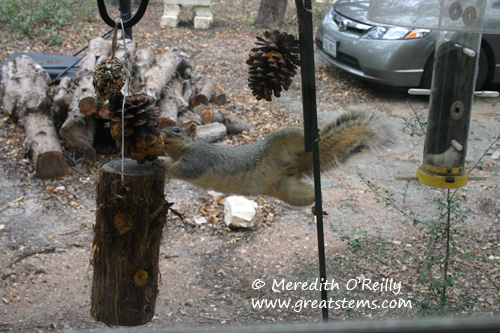
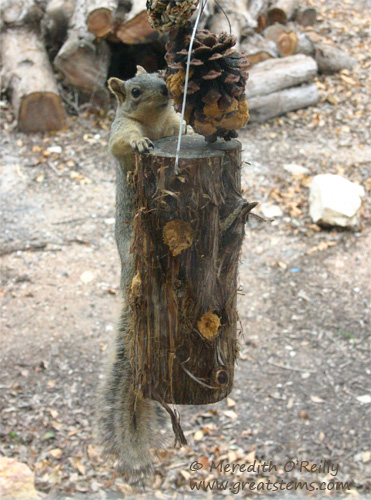
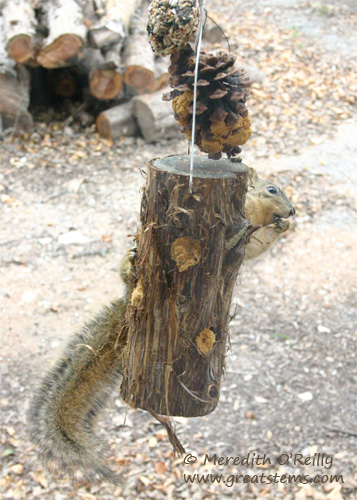
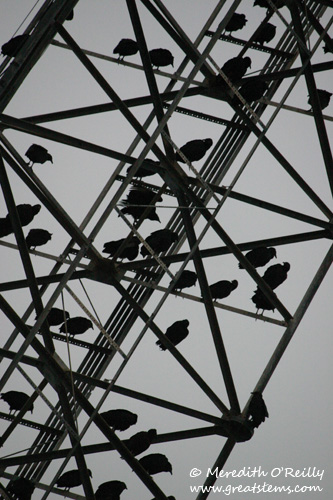
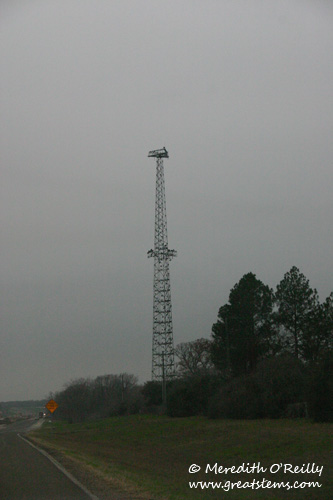
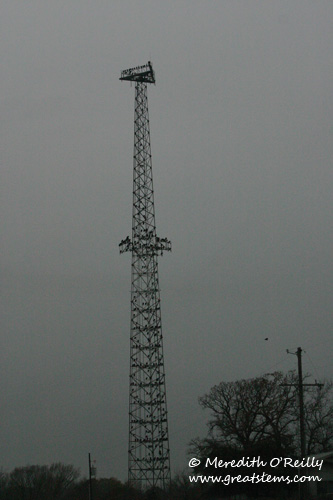
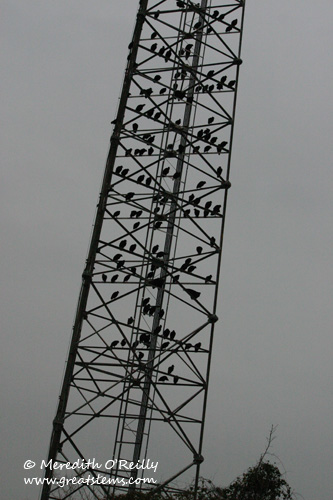
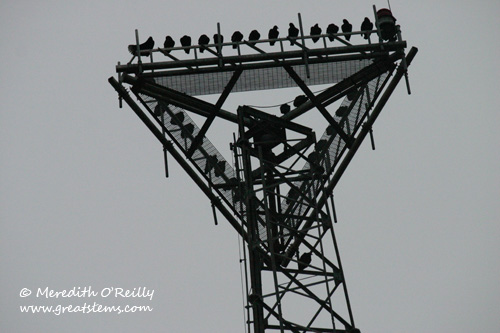 Here’s Great Stems’ 12 Days of Christmas song, inspired by our Winter 2011 wildlife:
Here’s Great Stems’ 12 Days of Christmas song, inspired by our Winter 2011 wildlife: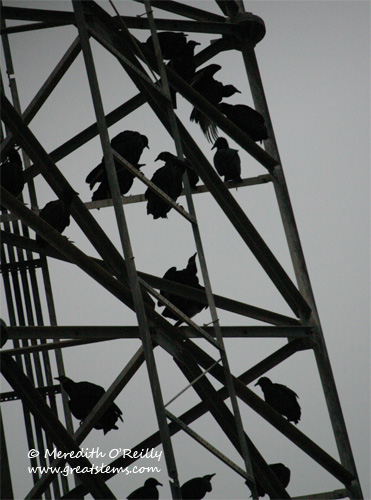
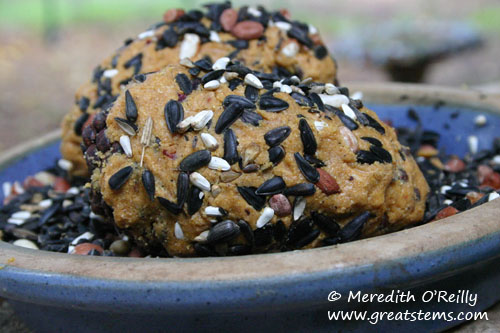
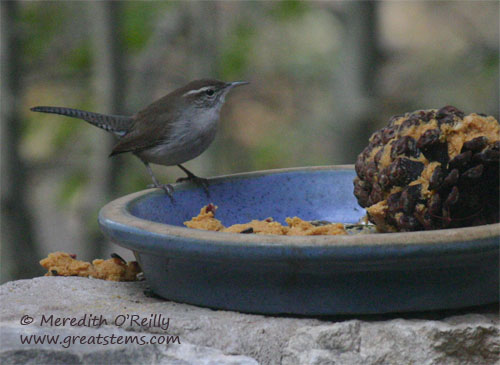
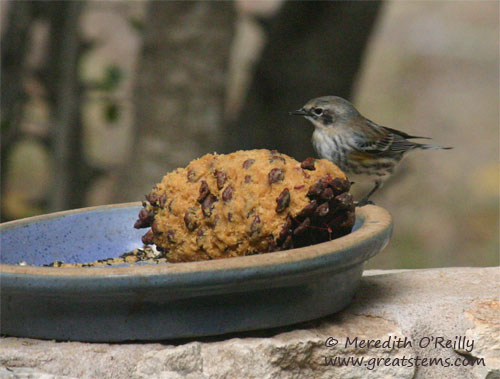
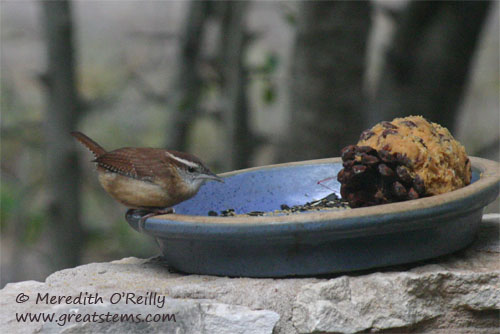
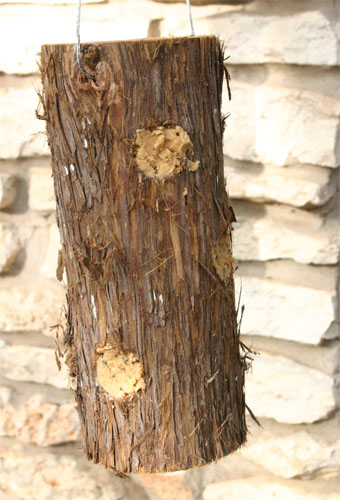
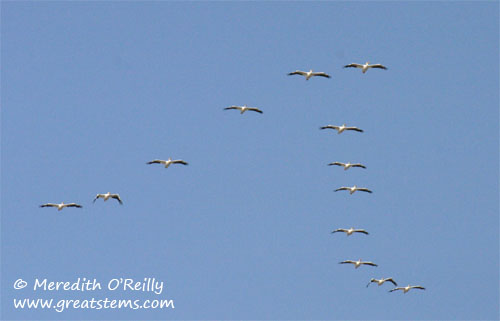
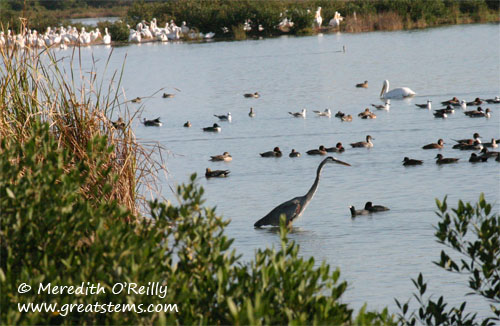
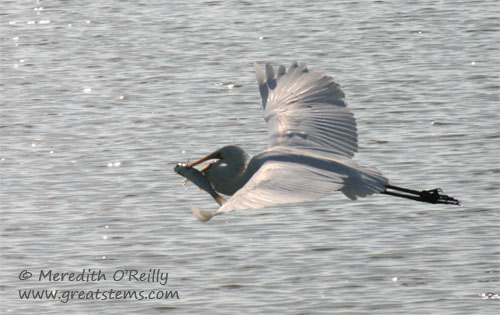
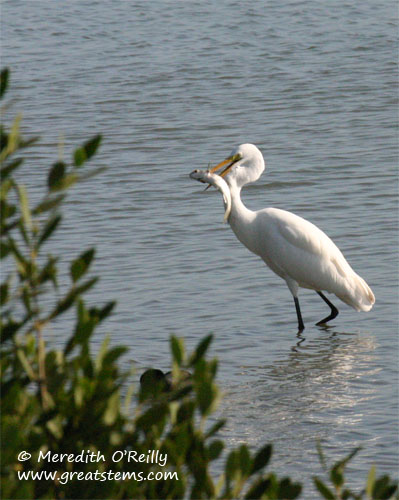
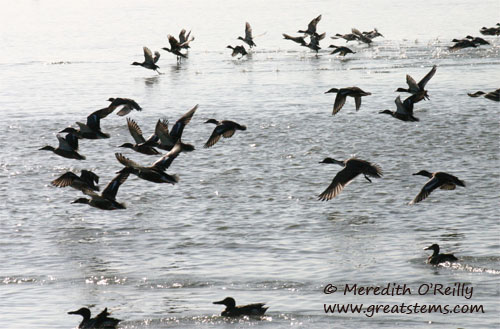
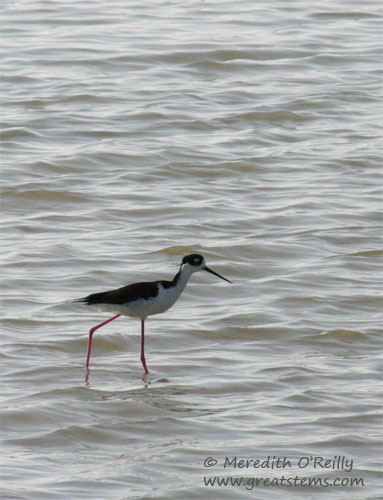 Black-Necked Stilt
Black-Necked Stilt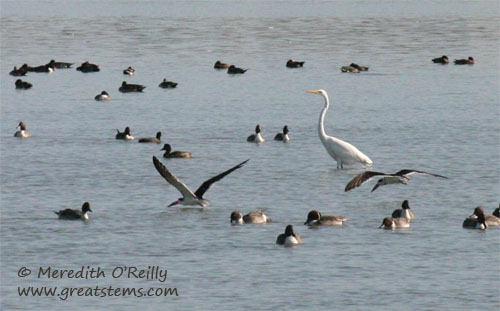
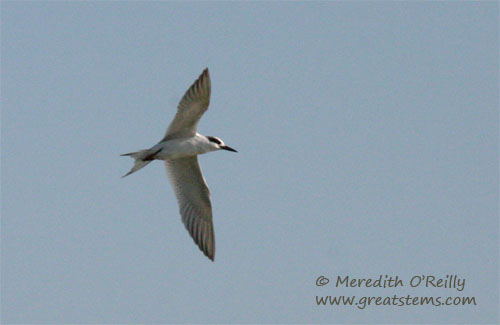 A Least Tern periodically hovered in the sky near us. It was quite vocal, too.
A Least Tern periodically hovered in the sky near us. It was quite vocal, too.